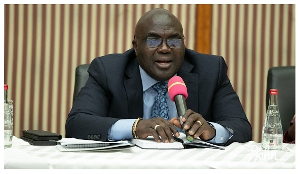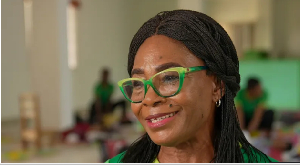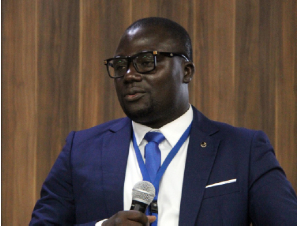Two water plants in the Eastern Region are producing potable water below their capacities because in-take source are recording high turbidity levels.
Sanitation and Water Resources Minister Cecilia Dapaah, who took a tour to the water plant sites, appealed to persons engaged in illegal mining activities to stop the practice for a quality in-take source for the water plants.
High turbidity levels can significantly reduce the aesthetic quality of lakes and streams, having harmful impact on recreation.
It also increases the cost of water treatment by the Ghana Water Company Limited.
According to the World Health Organization (WHO), water for human consumption should have turbidity levels below single-digit figures.
Turbidity levels of the Osino plant, which used to be 51 in 2009, is now 5877. That of Bunso is now 4,700 from the 46 in 2009.
A third water plant at Kyebi has a fairly clearer in-take source now, a situation Sanitation Minister Cecilia Dapaah lauded at her meeting with the Okyenhene Osagyefo Amoatia Ofori Panin at his palace.
”The Birim water intake source at Kyebi has an acceptable turbidity rate of 11 within acceptable international unit.”
Okyenhene Osagyefo Amoatia Ofori Panin expressed worry at the blatant disregard for nature and the rule of law in recent times.
He suggested an alternative livelihood job for the youth while investing in reclamation of lands and planting of trees to help government’s effort in halting unlawful mining activities.
The quality of the Birim River at the Osino and Bunso water plants is poor.
Some arable lands degraded and mining pits left uncovered.
Mining activities was as close as 20 meters to the water plant, a clear breach of the Water Resources and Environmental laws, which state activities should be 100 meters away from water source posing a threat to GWCL staff.
Due to the high turbidity levels, production capacity of the Osino plant has reduced to 300 from the expected 900 and that of Bunso has on several occasions been suspended.
Sanitation Minister Cecilia Dapaah, after a thorough tour of the water plants with her entourage from the Water Resources Commission, Community Water and Sanitation Agency and Ghana Water Company Limited, did not hide her disappointment at the devastation and muddying of the water bodies which has reduced production levels.
”I am very sad, some people have the audacity to divert the Birim River to form tools for washing their metals, and then this will sip into the river. I appeal to those doing this to stop because people need clean water to use.
“[Chemicals] have been purchased to make the water clean for us but because of muddying of the water, they cannot extract much. The plant can produce only 300, a drastic reduction from the 900 capacity demand. It’s scary how we have disembowelled our water bodies.”
There were clear indications from briefings at the site that miners now resorted to night work.
Madam Dapaa said ”in the morning when samples were taken at Bunso turbidity was 1900, and reduced to 330 in the afternoon. This indeed shows that when we were asleep others were working.“
The Eastern Region Minister, Seth Acheampong, warned that those who flout the rules would face the law and pointed out government was not against mining.
“The evidence is before us, every person plying a trade we are not against mining, but mining activities that is irregular. We are going to fight every person. The regulation says do not mine within a hundred perimeter to water bodies. So we are encouraging all who want to do business to go ahead. However, don’t cross the line because when you cross the line, you would not find the law entertaining, the law would come after you.”
General News of Tuesday, 18 May 2021
Source: 3news.com

















